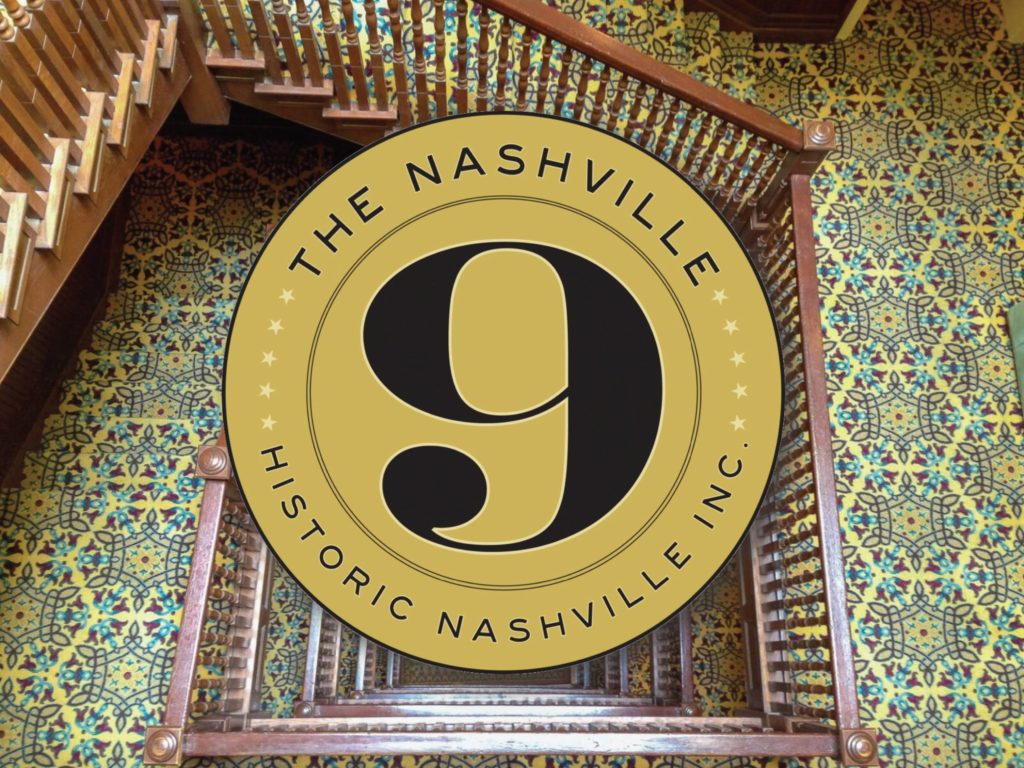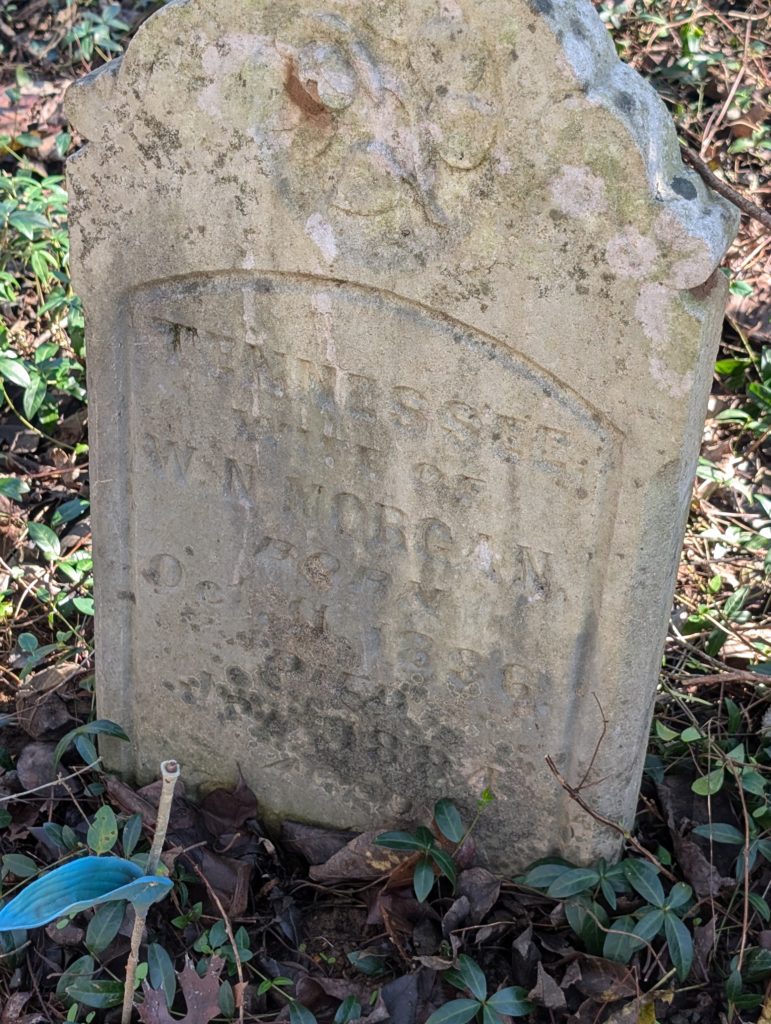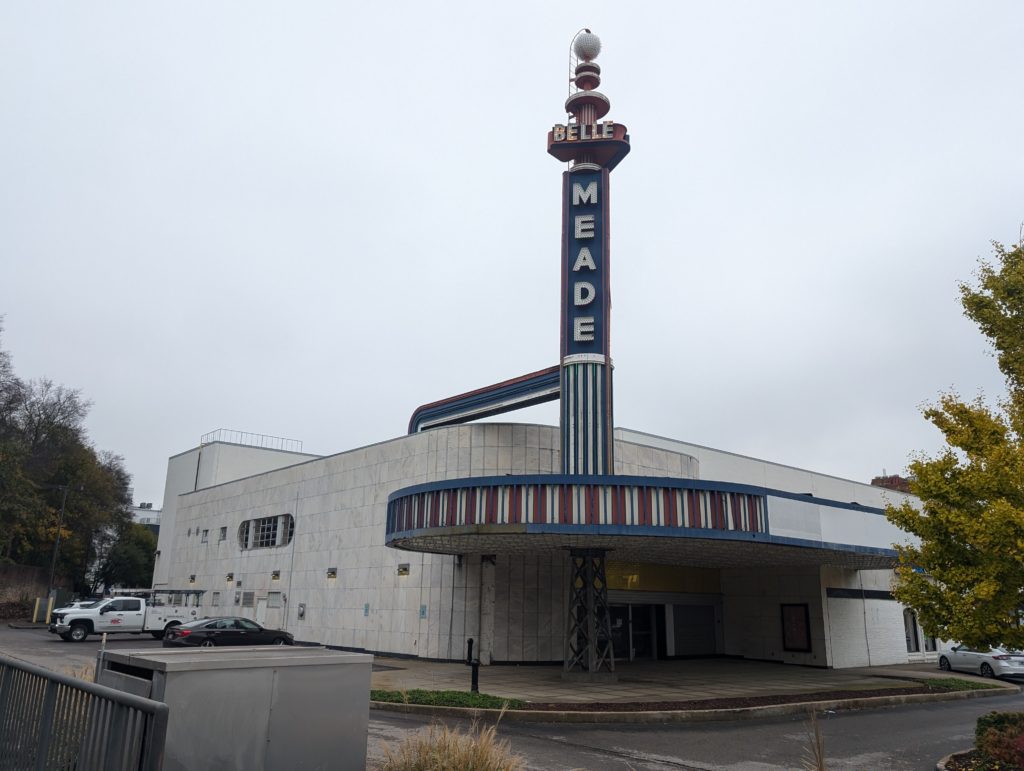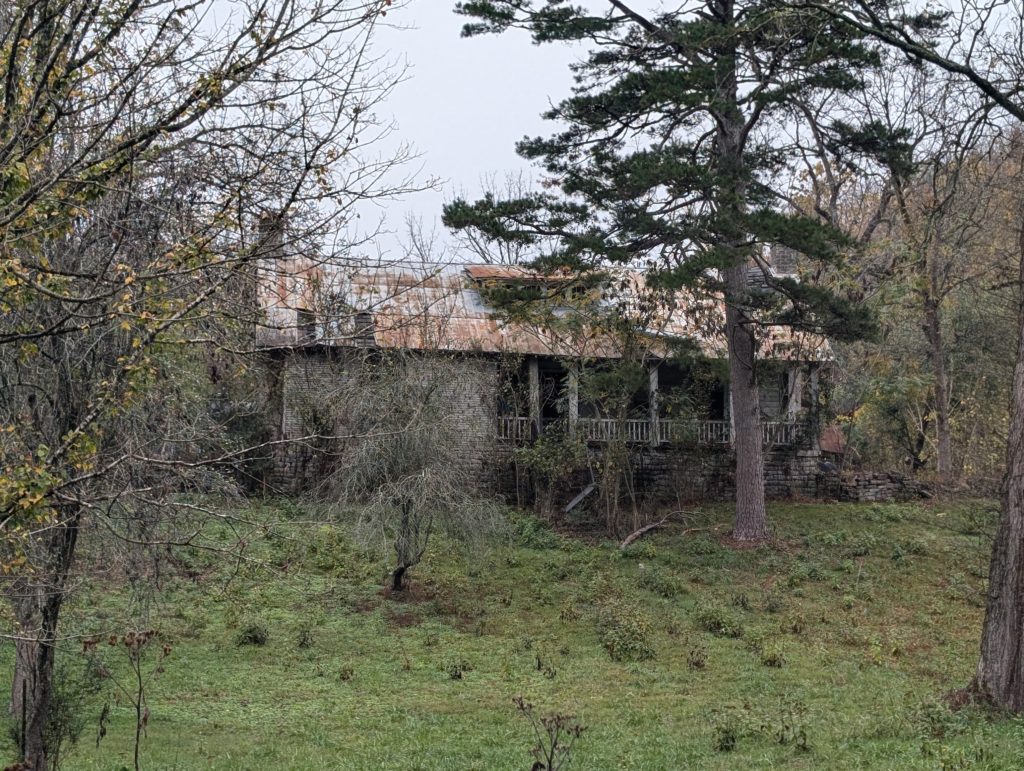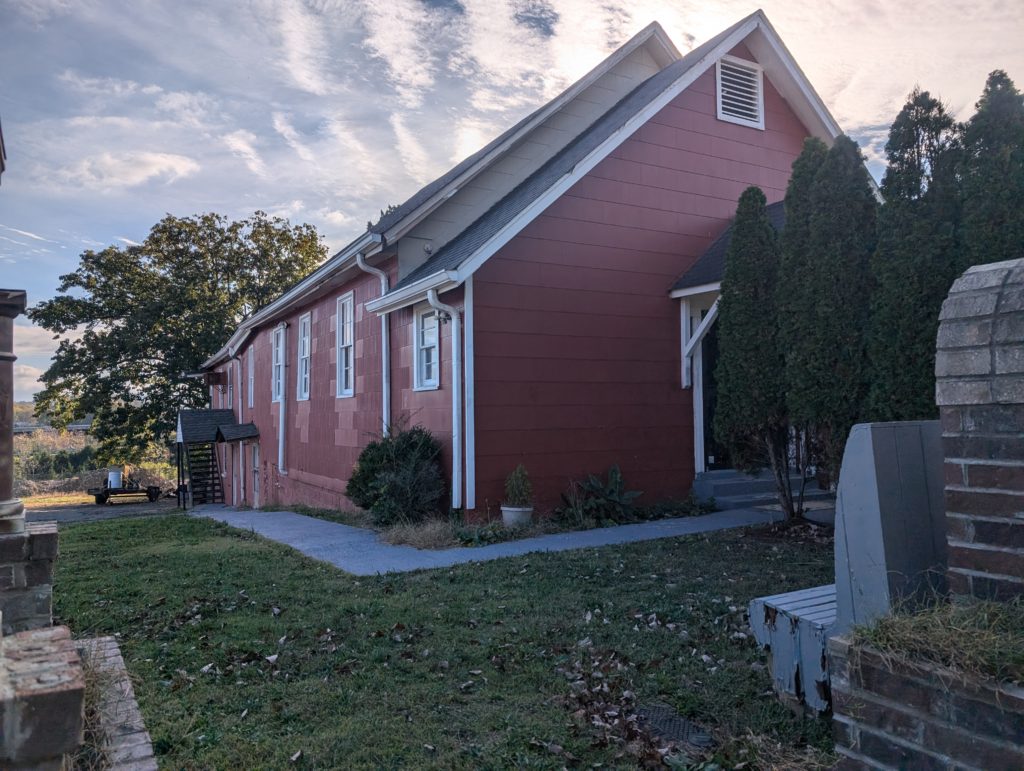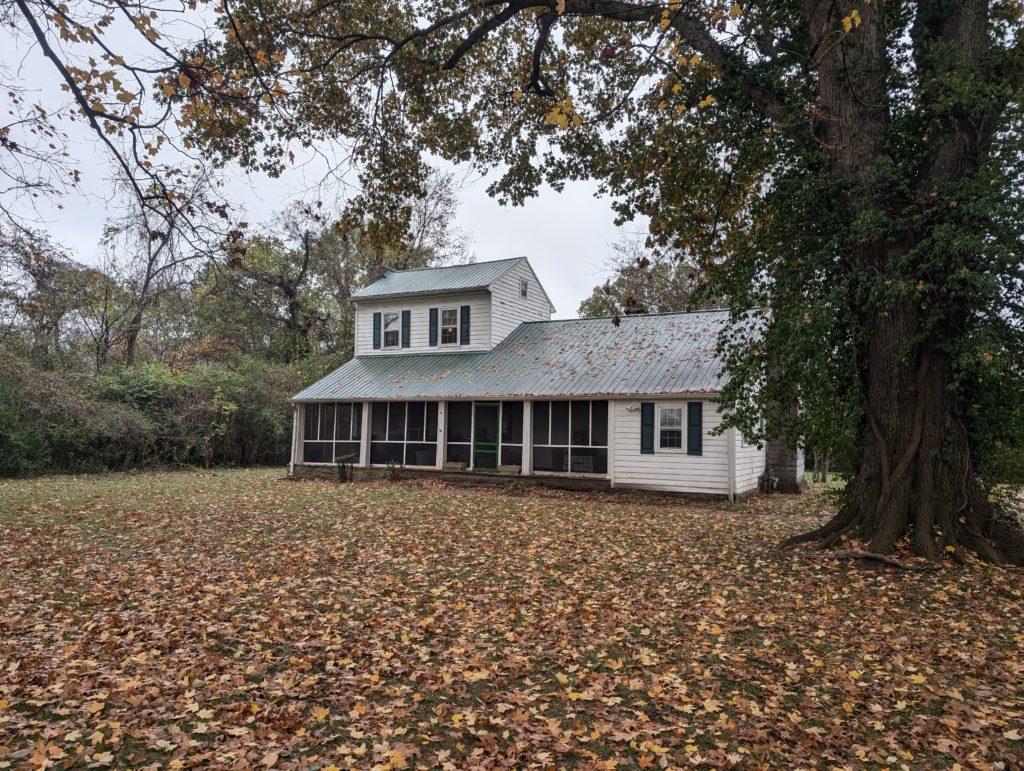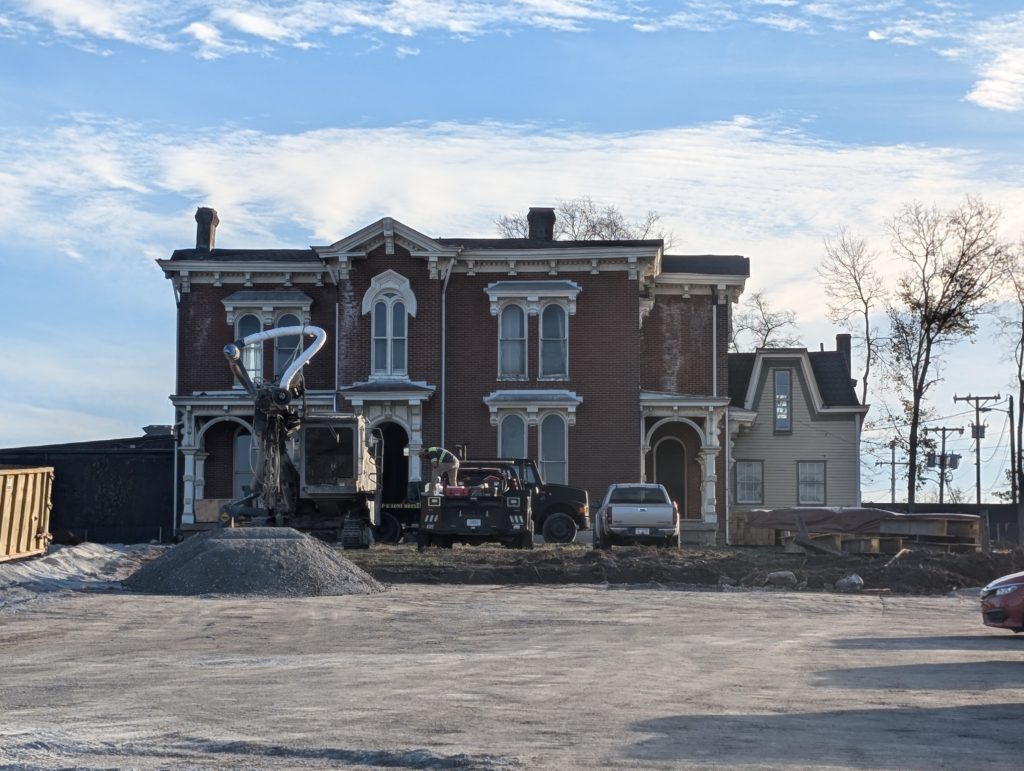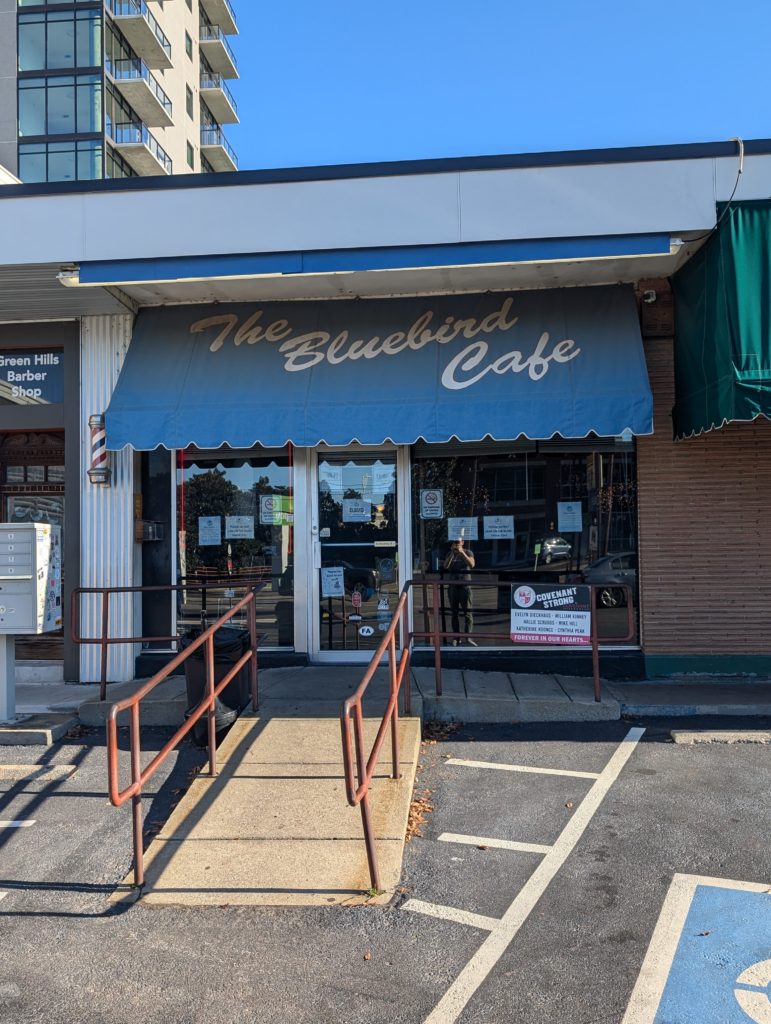Historic Nashville Inc. Announces the 2024 Nashville Nine
Our 16th annual list of endangered properties includes homes, churches, cemeteries, and music venues
(Nashville, TN)— Since 2009, Historic Nashville, Inc. has published the Nashville Nine, an annual list of historic local properties that are endangered or threatened by development, neglect, or demolition. The 2024 list highlights a range of property types, from churches to cemeteries to music venues, across the city that represent the diverse experiences of people who have called Nashville home.
This year, we are also highlighting fifteen success stories from previous Nashville Nine lists. These irreplaceable resources were saved through the advocacy work of dedicated Nashville citizens and the impressive investments made by property owners. We applaud their commitment to saving the places that keep Nashville unique.
The Nashville Nine serves as Historic Nashville Inc.’s strongest advocacy tool for the preservation of Nashville’s unique history and sense of place. This includes buildings, neighborhoods, or historic landscapes in danger of being lost to demolition, redevelopment, or neglect. Through our work with property owners, elected officials, government agencies, neighborhood leaders, and the public, we educate, evaluate, and create informed solutions for preserving the places that matter most to Nashville.
1. Colemere Manor, 1400 Murfreesboro Pike
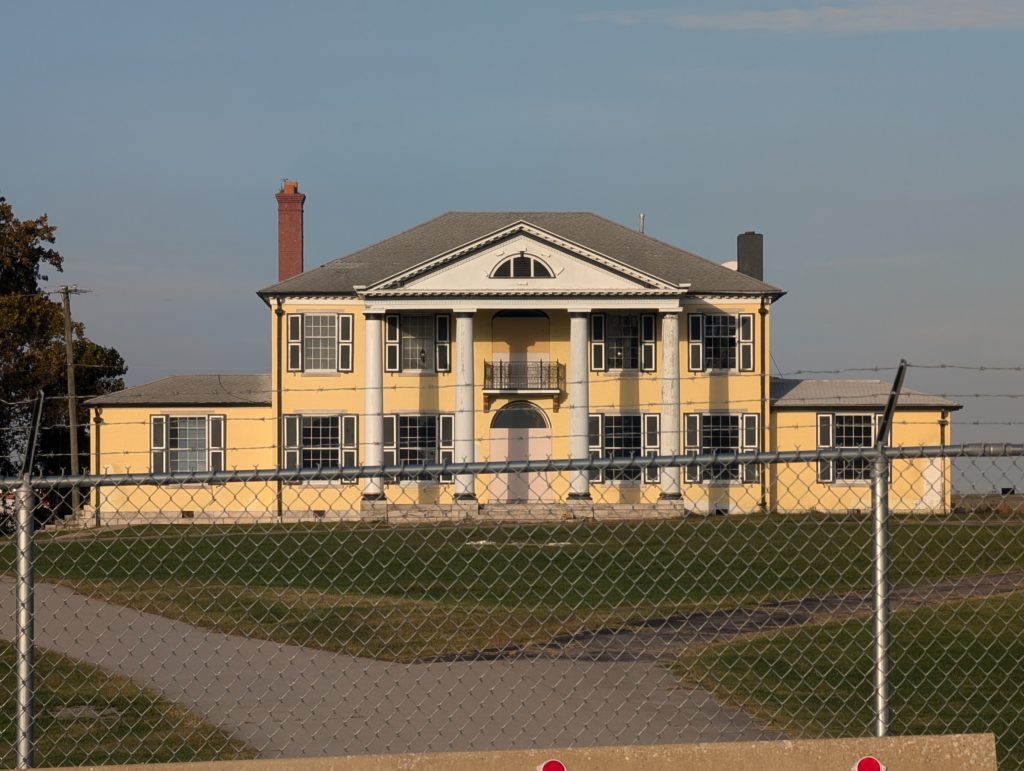
The Colemere Manor is perhaps best known as the former location of Monell’s at the Manor, an iconic Nashville restaurant that closed in April of this year after thirteen years in business. The original Colemere Manor was built in 1893 by E.W. Cole, president of the Nashville, Chattanooga & St. Louis Railway and founder of the American National Bank. The first house burned in 1929 and was subsequently rebuilt by Cole’s daughter. The building is owned by the Metro Nashville Airport Authority, which plans to tear it down to accommodate construction of a new runway.
The Day-Morgan Cemetery is a family burial ground located in Bordeaux that dates to the late nineteenth century. Originally known as the Abernathy Burial Grounds, the site was donated by Freeman Abernathy and contains marked burials from between 1872 and 1924 as well as dozens of unmarked graves. The cemetery was heavily damaged by a windstorm in late 2021, which toppled several trees and destroyed a portion of the fence. Morgan descendants have maintained the site for over two decades, but the current level of damage is beyond the group’s abilities. The plight of this cemetery highlights the vulnerable nature of the many small family cemeteries across Davidson County.
3. Belle Meade Theater, 4301 Harding Pike
The Belle Meade Theater was constructed in 1940 and operated for over fty years. The Art Deco theater was designed by Nashville-based architectural firm Marr & Holman. The building was constructed by the Crescent Amusement Company, which was owned by Tony Sudekum and operated most of the movie theaters in Nashville in this era. Although the theater closed in 1991, its marquee and sign continue to serve as a monument along Harding Pike. A current proposal for the site would demolish the theater and replace it with a mixed-use development.
4. Metropolitan Community Church, 131 15th Avenue
This seemingly nondescript building was once home to the Metropolitan Community Church, an important gay-affirming congregation in Nashville now known as Christ Community Church. It is one of the few remaining LGBTQ historic sites in Nashville still standing in its original or near-original form. Pastor Troy Perry founded the Metropolitan Community Church in Huntington Park, California, in 1968 as an affirming church for gays, lesbians, and allies. Congregations soon opened across the United States; Nashville’s MCC congregation started in 1972. MCC Nashville held some of the city’s first public gay rights protests, including the city’s first-known Gay Pride celebration in June 1977. MCC Nashville operated out of 131 15th Ave. N. from 1980 until 1992. The church called the building home during the 1980s AIDS epidemic and was at the forefront of AIDS activism, awareness, and fundraising efforts for the Nashville community at a time when government assistance was severely lacking due to discrimination against gays and lesbians. The site is part of the planned Reed District development in Midtown, which would demolish the structure and replace it with an apartment building, hotel, office space, and retail.
5. Elijah Robertson House, 7704 Old Charlotte Avenue
This house was built ca. 1820 by Elijah Robertson, nephew of General James Robertson. The dogtrot house was used as a stage stop and tavern during Elijah’s lifetime, and the property also included stables, a blacksmith shop, a stage stand, and a stone wall built by enslaved people. There are also two historical cemeteries on the property. As an antebellum residence and tavern, the Elijah Robertson House is a rare remnant of Nashville’s early history despite its later additions and renovations. The house is in disrepair and in need of stabilization, but there is a lack of funding options because the property is a private residence.
6. Mt. Calvary Baptist Church, 611 Creative Way
Located in Madison, this structure was constructed in 1923 for the Mt. Calvary Baptist Church, a historically African American congregation in the Briarville community. The site once contained a lodge, which is no longer extant, and the church has leased out the space to another small congregation. Although the building is in fair condition, it is located in an area experiencing rapid redevelopment, with a large affordable housing complex being developed next door.
Located at the southern edge of Davidson County at the intersection of Hillsboro Pike and Old Hickory Boulevard, the William Scruggs House is a two-story log house constructed in 1838. The property also includes historical burial grounds and a portion of the Aaittafamaꞌ/Kellytown archaeological site, most of which has been preserved through an adjacent Metro park. The 1.72-acre parcel has been repeatedly listed for sale as a vacant lot over the past three years, with listings failing to disclose the presence of burials on the site.
This Italianate house in Wedgewood Houston was constructed ca. 1870 by state senator Alfred Gowen Merritt and his wife Caroline Donelson. The structure contains a log cabin that may have been constructed as early as the 1780s by Merritt’s maternal grandfather, Captain John Rains. The brick structure is an outstanding example of the Italianate style, with bracketed cornices, hood moldings, arched windows, and porches. The property was sold in 2021, and the new owners plan to relocate the mansion within the parcel and construct a large multi-use development on the site surrounding it. Relocation has the potential to irreparably damage the historic brick masonry building, and the new construction will drastically alter the setting of the historic home in an area already rife with development.
9. Small music venues across Nashville
Nashville’s reputation as Music City was facilitated, in part, by small music venues across the city where aspiring songwriters and musicians could perform in hopes of being discovered; where fans of niche genres could experience live performances; and where nationally known artists could give intimate performances. Some of these venues, like the Basement on 8th Avenue, are newer performance venues housed in historic structures, while others have become historic icons in their own right. Among these are the Bluebird Cafe in Green Hills, where countless songwriters have built their careers, and the Station Inn in the Gulch, home to live bluegrass performances since 1974. In a city where development is progressing rapidly, these small venues are quickly being dwarfed by surrounding high-rise developments. Read the recently-completed Nashville Independent Music Venues Study, commissioned by the Metropolitan Planning Department, to learn more about the live music venues that make Nashville unique and how we can help preserve them and invest in their futures.
Nashville Nine Success Stories
John Geist & Sons Blacksmith Shop, 311 Jefferson Street
Listed on the 2010, 2012, and 2013 Nashville Nine, the Geist Blacksmith Shop was constructed ca. 1900 in Germantown. Abandoned for many years, the space was restored in 2015 and is now home to Geist Bar + Restaurant.
Workmen’s Circle Hall, 521 Rep. John Lewis Way
This 1859 Italianate townhouse was constructed for Isaac Garretson, a Jewish community leader, before being purchased by the Workmen’s Circle, a Jewish fraternal organization. Listed on the 2010 Nashville Nine, the property was renovated by Aerial Development Group in 2013.
Gallatin Road Fire Hall for Engine No. 18, 1220 Gallatin Avenue
Listed on the 2011 Nashville Nine, this 1930 Tudor Revival fire station served East Nashville for nearly 60 years. After a devastating fire in 2011, Karen Goodlow Designs renovated the space in 2015. It now serves as the Station, housing retail and office space.
Highland Heights School, 123 Douglas Avenue
The Highland Heights School was constructed in 1935 and was in disrepair when it was listed on the Nashville Nine in 2011. Metro Nashville Public Schools finished a renovation and addition at the site in 2015, and it is now home to KIPP Academy.
Percy Warner Park Picnic Shelters, 7311 Highway 100
The picnic shelters in Percy Warner Park were built by the Works Progress Administration during the 1930s and 1940s in a rustic park style. Along with eleven shelters in Edwin Warner Park, the fourteen shelters in Percy Warner Park were restored beginning in 2013. The Friends of Warner Park raised over $500,000 for the project.
Wade School, 5022 Old Hydes Ferry Pike
This former elementary school in Bells Bend was constructed in 1936 and closed in 1997. After sitting vacant for decades, the school was listed on the Nashville Nine in 2012. Susan Richardson and Rowan Miller restored the building in 2014 as Old School Farm, a working farm for adults with intellectual disabilities.
Ben West Public Library, 225 Polk Avenue
Listed on the 2013 Nashville Nine, the Ben West Public Library was constructed in 1965 as Metro Public Library’s main branch. The mid-century modern building was named for former mayor Ben West and used until it closed in 2006. The structure was purchased by Hastings Architecture Associates in 2017 and serves as the firm’s headquarters.
Kellytown Archaeological Site, Hillsboro Road at Old Hickory Boulevard
Traditionally called Aaittafamaꞌ, the Kellytown Archaeological Site is a Mississippian-era village that was discovered in the 1990s. The Friends of Kellytown, supported by other organizations such as the Land Trust for Tennessee and Middle Tennessee State University’s Center for Historic Preservation, raised money for the purchase of the site. Metro Parks acquired the site in 2014 for use as a public park. However, as mentioned in this year’s Nashville Nine, a portion of the site sits on a privately owned parcel immediately south of the park and is in danger of destruction.
Belle Air Mansion, 2250 Lebanon Pike
The Belle Air Mansion was built in 1832 by John Harding as a wedding present for his daughter Elizabeth and her husband Joseph Clay. The Greek Revival mansion was listed on the 2014 Nashville Nine when the property was for sale. Lewis and Connie James purchased the property in 2016 and restored the mansion, which now operates as a bed & breakfast.
RCA Studio A, 30 Music Square
Listed on the 2014 Nashville Nine, RCA Studio A was founded in 1965 by Chet Atkins, Owen Bradley, and Harold Bradley and was a center for the production of county’s music Nashville Sound. A local developer announced plans to demolish the building in 2014. The threat to Nashville’s music history received nationwide history, and the building was ultimately purchased and saved by Ben Folds, Mike Curb, Chuck Elcan, and Aubrey Preston.
Sunnyside Outbuildings, 1113 Kirkwood Avenue
Sunnyside Mansion was built ca. 1852 for Mary Childress Benton. The Greek Revival mansion has been owned by the city of Nashville since 1945. Its grounds are open to the public as Sevier Park, while the house itself serves as the offices of the Metropolitan Historical Commission. The site’s outbuildings were listed on the Nashville Nine in 2014, when they were in a state of disrepair and deterioration. Metro Nashville invested approximately $6 million for Sunnyside’s restoration and work across the site, which was completed earlier this year.
Fort Negley Park, 1100 Fort Negley Boulevard
Named the 2017 Nashville One for its extraordinary significance and urgent threats to the site, Fort Negley Park includes a nationally significant Union Civil War fort that was constructed by African American labor. In the 1970s, Greer Stadium was constructed for minor league baseball in a portion of the park. After the stadium was abandoned, a mixed-use project was proposed for the site. However, an archaeological survey found that the site contained human graves. Following public outcry, including the Nashville Nine, the project was canceled and an updated master plan was developed that would preserve the site. Fort Negley was also named a Site of Memory under UNESCO’s Slave Route Project.
Burrus Hall, 1507 Meharry Boulevard and 1020 16th Avenue North
This 1945 college hall at Fisk University was designed by renowned local African American architectural firm McKissack & McKissack and named for James and John Burrus, two of Fisk’s first graduates. The vacant building was added to the Nashville Nine in 2019. In 2023, Metro Nashville and Fisk announced a renovation of Burrus Hall as the eventual home of the Darrell S. Freeman Incubation and Innovation Center, with approximately $1.5 million spent on the project to date.
Hopewell Missionary Baptist Church, 908 Monroe Street
Hopewell Missionary Baptist Church was constructed in 1906 and associated with Nashville’s German and African American communities. The masonry building was heavily damaged during the March 2020 tornado that tore through Nashville, leading to its listing on the 2020 Nashville Nine. The congregation completed a stunning restoration of the church building in 2022.
The Henry Allen and Georgia Bradford Boyd House, 1601 Meharry Boulevard
This house was owned by two prominent African Americans in Nashville’s history: Dr. Henry Allen Boyd, president of Citizens Bank and a founder of the National Baptist Publishing Board, and his wife Georgia Bradford Boyd, a suffragist and leader in Nashville’s Colored Women’s Club movement. In danger of demolition, the house was listed on the 2020 Nashville Nine. Subsequently, Fisk University began fundraising to preserve the building and completed a $1.4 million restoration earlier this year.

